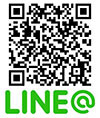Colour
All files should be done in CMYK mode in order to get the right colours before uploading. Files that are in RGB or PMS mode will be converted to CMYK mode and this may affect your colours.
File size
You file must be exactly the same size as the area after trimming plus the bleed. In other words, your files must be 0.25 inches bigger that your desired size. (For example, 2x3.5-card layout must be 2.25x3.75). For envelopes, both pictures and messages must not be too close to the edges and bleeding is not allowed.
Crop mark
Please make sure that you save your file without a crop mark. Having it means that it will appear on your finished work.
Font/text
Do not use a font size smaller than 7pt. If you use vector programmes like Illustrator, InDesign or Freehand, please turn the texts into outlines before creating a PDF file. If you use Photoshop, please flatten your picture. If you use MS Publisher, please make sure everything is embedded in the file. For more help on embedding, please see embedding guide PDF.
Resolution
All pictures must be at least 300 dpi in resolution, otherwise, you picture will be grainy and blurry.
Safety zone
Do not place a photo or a text outside the safe zone, which is 1/8 inches from the cutline to avoid the cut.
Typos/grammatical mistakes
Please proofread your work.
Borders
If you would like to include a border in your work, please place it at least 1/8 inches from the edge. Otherwise your finished work will have unequal edges during cutting process. For the best result, place it ¼ inches from the edge.
Arrangement
The front and the back of your work must be in the same orientation. If one side is portrait and the other is landscape, one needs to be rotated. Multiple-page documents (booklets and catalogues)
This is relevant to booklet and catalogue printing. Please remember the following. The first page must be on the outside of the front cover. The second page must be on the inside of the front cover. And so on until the last page, which must be on the outside of the back cover. Multi-pages PDF must be in total number of multiple of 4. The page must have the same size of the area after cutting plus the bleed. Our expert help is available if you are unsure about this. The help is free of charge. Please call 039351678 or 039313144 or simply email us.
We accept:
- .PSD – Photoshop
- .EPS – Illustrator
- .INDD – InDesign
- .CDR – CorelDraw 12
- .FHD – Freehand
- .PUB – Publisher
- .PPT – PowerPoint
- .PDF – Adobe Acrobat
- .TIF – Tagged Image
- .JPEG – Joint Photographic Experts Groip
- .BMP – Bitmap
See checklist for more help when preparing a file.





